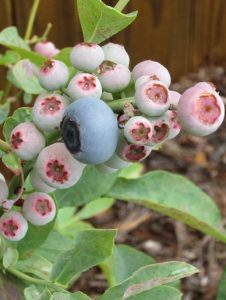
By Heather N. Kolich, ANR Agent, UGA Extension Forsyth County
One of the first harbingers of fall, a flight of migrating geese, passed the Extension office last week. Fall is my favorite season. It’s the time for flannel shirts, pumpkin pie, and preparing your landscape for a beautiful and bountiful spring show. Although spring stimulates many gardeners to get outside and plant things, fall is actually the best season for planting some types of perennial plants, including trees, shrubs, and spring flowering bulbs.
Spring-flowering bulbs need a shot of cold
Planting hardy, spring-flowering bulbs in October and November gives them a chance to grow out their root systems before the cold weather of winter arrives. Most spring-flowering bulbs also need to experience a period of cold weather in order to produce blooms. Sometimes, our winters aren’t cold enough for long enough to please the likes of tulips and peonies.
The earliest of the spring-flowering bulbs is usually the crocus. These low-to-the-ground blooms are available in white, yellow, orange, and purple to blue cultivars that emerge in February or March. Another very early bloomer to try is Glory-of-the-Snow (Chionodoxa luciliae), available in white, pink, and purple-blue. Because these bulbs bloom so early, they can be planted right into warm-season turfgrasses to add little clusters of brightness to dormant lawns.
Deliciously scented daffodils are another favorite spring-flowering bulb. Numerous generations of selective breeding have produced daffodils with double blooms, interesting color combinations, and a wide range of mature heights. Early blooming cultivars flower with or shortly after crocus, and pair well with grape hyacinth. They can be planted under deciduous trees to provide color to early spring landscapes before the tree leaves fill in. Late blooming daffodil varieties will brighten the landscape through May, but may need to be planted outside the shade of trees so they’ll get enough sun exposure.

Fall planting reduces stresses on trees and shrubs
Because root systems are active even when shoot systems are dormant, fall planting allows trees and shrubs to become established in their new environment without having to cope with the typical summer stress factors of drought, heat, pests, and flower or fruit production. Dormant planting is also a disease control strategy. Leaves can be a source of fungal and bacterial diseases. Plants nearing dormancy have fewer leaves, so they’re less likely to transmit diseases to their new environment.